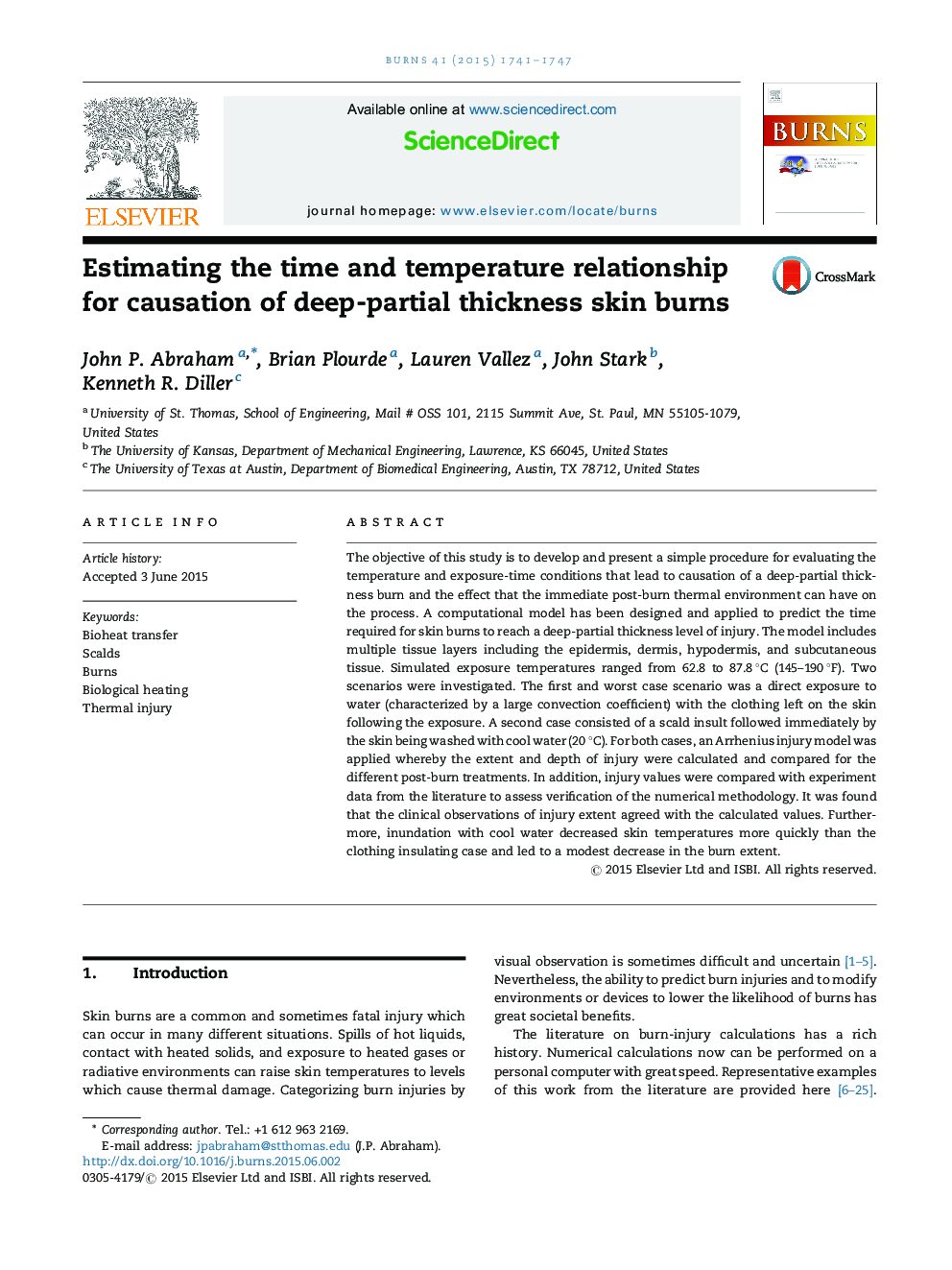| Article ID | Journal | Published Year | Pages | File Type |
|---|---|---|---|---|
| 6048607 | Burns | 2015 | 7 Pages |
â¢Calculations to determine the time required for a deep partial thickness burns.â¢Rapid cooling can reduce damage.â¢The calculations are found to agree well with clinical observation.â¢Equations are presented to predict deep-partial thickness burns.â¢Burn calculations were performed for children who burn easier than adults.
The objective of this study is to develop and present a simple procedure for evaluating the temperature and exposure-time conditions that lead to causation of a deep-partial thickness burn and the effect that the immediate post-burn thermal environment can have on the process. A computational model has been designed and applied to predict the time required for skin burns to reach a deep-partial thickness level of injury. The model includes multiple tissue layers including the epidermis, dermis, hypodermis, and subcutaneous tissue. Simulated exposure temperatures ranged from 62.8 to 87.8 °C (145-190 °F). Two scenarios were investigated. The first and worst case scenario was a direct exposure to water (characterized by a large convection coefficient) with the clothing left on the skin following the exposure. A second case consisted of a scald insult followed immediately by the skin being washed with cool water (20 °C). For both cases, an Arrhenius injury model was applied whereby the extent and depth of injury were calculated and compared for the different post-burn treatments. In addition, injury values were compared with experiment data from the literature to assess verification of the numerical methodology. It was found that the clinical observations of injury extent agreed with the calculated values. Furthermore, inundation with cool water decreased skin temperatures more quickly than the clothing insulating case and led to a modest decrease in the burn extent.
